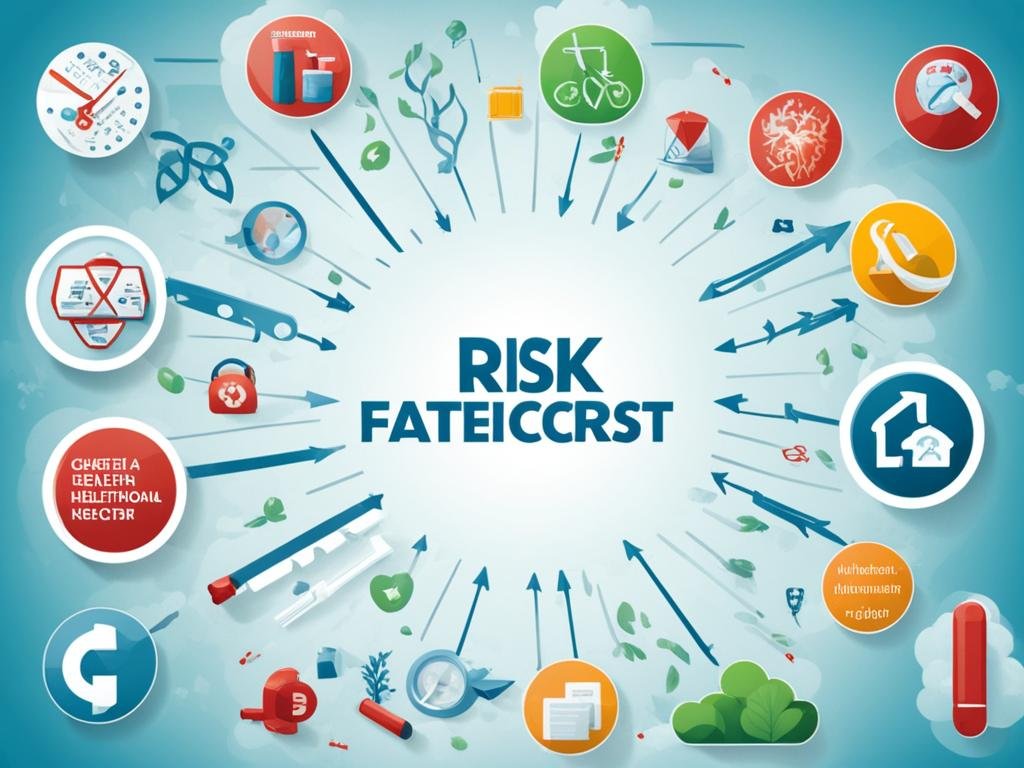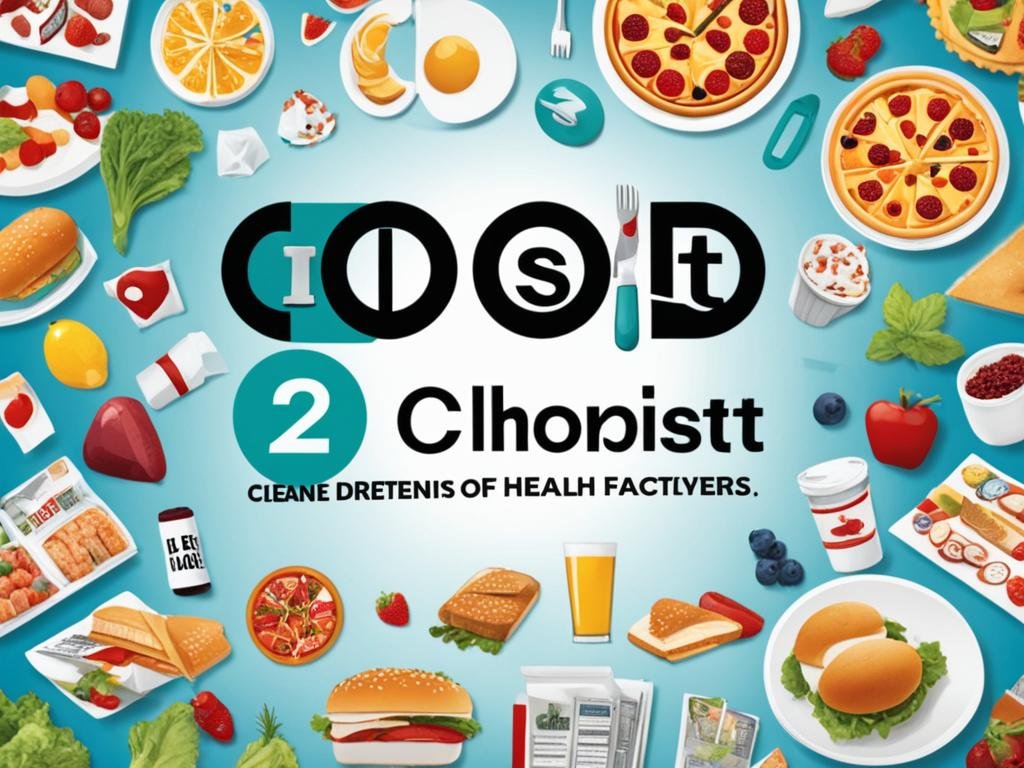What if you had the power to shape your health destiny? The answers lie in the often-overlooked realm of risk factors – the key to unlocking a healthier future. By understanding the nuances of these potential threats, you can take control and make informed decisions that could profoundly impact your well-being.
A health risk is the chance or likelihood that something will harm or otherwise affect your health. Risk factors are the characteristics that influence whether your health risks are high or low, such as your age, sex, family health history, and lifestyle. Grasping the essence of these risk factors is paramount, as it provides the necessary perspective to navigate the complex landscape of potential harms and benefits.
But what if you could uncover the hidden truths behind these risk factors? Would you be surprised to learn that some may be within your control, while others remain beyond your influence? Delving into this realm could unlock the keys to a healthier, more empowered you.
Key Takeaways
- Understanding risk factors is the foundation for making informed health decisions.
- Some risk factors are genetic or environmental, while others are influenced by lifestyle and behavior.
- Risk assessment and mitigation strategies can help you proactively manage potential health threats.
- Effective communication with healthcare providers is crucial for navigating health risks.
- Exploring the emotional and cognitive factors that shape risk perception can lead to more realistic risk management.
Introduction to Risk Factors
Understanding risk factors is essential for maintaining good health and making informed decisions about our wellbeing. Risk factors are the characteristics or variables that can affect the likelihood of an individual experiencing a particular health outcome, such as a disease or injury.
Definition of Risk Factors
According to the first source, a health risk is the chance or likelihood that something will harm or otherwise affect your health. Risk factors are the specific attributes that determine whether your health risks are high or low, including factors like your age, sex, family health history, and lifestyle choices.
Importance of Understanding Health Risks
The source emphasizes that comprehending health risks is key to making informed decisions, as it provides valuable perspective on potential harms and benefits. The second source further explains that while health risks can be confusing, understanding them is crucial in order to take proactive steps to lower your risks. The third source defines a risk factor as a variable that could increase your chances of developing a disease or infection, such as physical activity, stress, and nutrition.
https://www.youtube.com/watch?v=ZJs-3mG3ps0
Types of Risk Factors
Understanding the various types of risk factors is crucial in assessing and addressing potential health threats. The first source outlines three main categories: genetic and hereditary, environmental, and lifestyle and behavioral risk factors.
Genetic and Hereditary Risk Factors
Genetic and hereditary risk factors are those that are inherited from your parents, such as your genes and ethnicity. These innate characteristics can predispose individuals to certain health conditions, making them more susceptible to developing specific diseases or disorders. Identifying and understanding your genetic and hereditary risk factors can help you and your healthcare provider develop targeted prevention and management strategies.
Environmental Risk Factors
Environmental risk factors are those that are present in your surroundings, such as exposure to toxins, pollutants, or infectious agents. These external factors can have a significant impact on your overall health and well-being. Recognizing and mitigating environmental risk factors can involve measures like improving air quality, reducing chemical exposures, and practicing good hygiene.
Lifestyle and Behavioral Risk Factors
Lifestyle and behavioral risk factors are those that are within your control, such as your diet, physical activity, and personal habits. These modifiable risk factors are crucial to consider, as they provide opportunities for you to take proactive steps to improve your health. By adopting healthier lifestyle choices, you can potentially reduce your risks for a variety of chronic conditions and enhance your overall well-being.

Understanding these different types of risk factors can help you identify which ones apply to you and take appropriate action to mitigate them. By addressing genetic, environmental, and lifestyle-related risks, you can empower yourself to make informed decisions and take control of your health.
Assessing Individual Risk
When it comes to understanding your health risks, a personalized approach is crucial. Your individual risk profile is shaped by a variety of factors, including your age, gender, family history, and medical records. By carefully evaluating these elements, you can gain valuable insights into your unique susceptibilities and take proactive steps to mitigate potential health threats.
Age and Gender Considerations
As we age, our bodies undergo natural changes that can influence our individual risk assessment. Certain conditions, such as heart disease or osteoporosis, become more prevalent with age-related risk factors. Similarly, gender-based risk factors can play a significant role in determining our propensity for various health issues. Women, for example, may face a higher risk of conditions like breast cancer or autoimmune disorders, while men are more susceptible to conditions like prostate cancer or cardiovascular problems.
Family History and Medical Records
Your family history and medical records provide invaluable insights into your genetic and hereditary predispositions. Understanding your family’s health lineage can help you identify potential individual risk assessment factors that may be passed down through generations. Additionally, reviewing your own medical history can uncover pre-existing conditions or risk factors that require close monitoring and targeted interventions.
| Risk Factor | Description | Potential Impact |
|---|---|---|
| Age | The natural process of aging can increase the risk of certain health conditions. | Older adults may face a higher risk of chronic diseases, such as heart disease, cancer, and cognitive decline. |
| Gender | Biological differences between men and women can influence susceptibility to various health issues. | Women may have a higher risk of conditions like breast cancer, osteoporosis, and autoimmune disorders, while men may be more prone to prostate cancer and cardiovascular problems. |
| Family History | Genetic and hereditary factors passed down from parents and ancestors can predispose individuals to certain health conditions. | A strong family history of diseases like heart disease, diabetes, or certain types of cancer can increase an individual’s individual risk assessment. |
| Medical Records | An individual’s medical history, including past diagnoses, treatments, and test results, can provide valuable insights into their health status and potential risk factors. | Reviewing medical records can help identify pre-existing conditions or risk factors that require ongoing monitoring and management. |
By closely examining these key elements of your individual risk assessment, you can gain a deeper understanding of your personal health landscape and take proactive steps to mitigate potential risks. This knowledge empowers you to make informed decisions and work collaboratively with healthcare professionals to prioritize your well-being.
risk factors
Navigating the complex landscape of health risks often requires a nuanced approach. While some risk factors, such as your genes or ethnicity, cannot be changed, there are numerous modifiable risk factors that are within your control. Identifying these malleable elements presents opportunities for you to take proactive steps and reduce your health risks.
Pinpointing Modifiable Risk Factors
The first step in managing your health risks is to clearly understand the factors that you can influence. These modifiable risk factors may include your diet, physical activity, stress levels, and lifestyle choices. By recognizing the areas where you have the power to make changes, you can begin to develop a personalized plan for risk mitigation.
Strategies for Reducing Risk
Once you’ve identified the modifiable risk factors that apply to your individual health profile, it’s time to implement risk reduction strategies. This may involve adopting healthier lifestyle changes, such as incorporating regular exercise, consuming a nutrient-rich diet, and managing stress levels. By addressing these modifiable risk factors, you can take proactive steps to safeguard your wellbeing and minimize the potential threats to your long-term health.

Communicating Health Risks
Effectively communicating health risks is crucial for empowering patients to make informed decisions about their well-being. Understanding the nuances between absolute risk and relative risk can greatly impact how individuals perceive and respond to potential health threats.
Understanding Absolute and Relative Risk
Absolute risk refers to the actual likelihood or chance of a specific outcome occurring, such as the probability of developing a particular disease. In contrast, relative risk compares the absolute risks between different groups or scenarios, providing a measure of how much more (or less) likely an event is to happen in one group compared to another. When presenting health statistics, the way these risks are framed can profoundly influence how patients interpret and react to the information.
Effective Doctor-Patient Communication
Open and honest dialogue between healthcare providers and patients is essential for ensuring communicating health risks is clear and actionable. Doctors should take the time to explain risk factors, potential outcomes, and treatment options in a manner that empowers patients to make well-informed decisions. By fostering a collaborative environment, patients feel more equipped to weigh the benefits and drawbacks of various health strategies, ultimately leading to improved outcomes and better patient satisfaction.
Risk Perception and Emotional Factors
Navigating the complexities of health risks can be especially challenging when emotions run high, such as when individuals face serious illnesses or life-altering medical decisions. The first source cites a study that found people with advanced cancer tended to expect better outcomes and longer survival times from treatment than their doctors did, often due to misunderstandings about the risks involved.
Cognitive Biases and Risk Perception
The way we perceive and process health risks can be heavily influenced by various cognitive biases. For example, the optimism bias can lead people to underestimate their personal vulnerability to negative health outcomes, while the availability heuristic may cause individuals to overemphasize risks that are more readily available in their minds, such as those widely covered in the media.
These cognitive biases can significantly distort an individual’s risk perception, leading to inaccurate assessments of the actual probabilities and potential consequences of health-related risks. Understanding the role of these biases is crucial for healthcare providers and patients to engage in realistic discussions about treatment options, likely outcomes, and the management of fear and anxiety.
Coping with Fear and Anxiety
The third source suggests that risk factors, such as stress, can potentially play a role in an individual’s risk for developing certain diseases. Therefore, effectively coping with the fear and anxiety associated with health risks is an important consideration in overall risk management strategies.
Healthcare providers and patients must work collaboratively to create an environment of open communication, where emotions can be acknowledged, and realistic discussions about health risks and treatment choices can occur. By addressing the emotional factors that influence risk perception, individuals can make more informed decisions and develop effective coping mechanisms to navigate their health challenges with greater resilience.
Risk Management Strategies
Developing a comprehensive risk mitigation plan is crucial in managing potential health threats. By proactively identifying and addressing modifiable risk factors, individuals can take significant steps to enhance their overall well-being. The first source highlights the importance of understanding your personal health risks, while the second source suggests that you have the power to change many factors that put your health at risk, such as protecting your skin from sun exposure, choosing to eat healthy foods, and being physically active.
Developing a Risk Mitigation Plan
The third source emphasizes that risk factors, such as physical activity, stress, and nutrition, could potentially play a role in your risk for developing certain diseases. By developing a strategic risk mitigation plan, you can systematically address these modifiable risk factors and take proactive steps to improve your overall health. This plan should encompass lifestyle changes, preventive measures, and regular monitoring to ensure the ongoing effectiveness of your risk management strategies.
Incorporating Risk Assessment into Decision-Making
Integrating risk assessment into your decision-making process is another crucial component of effective risk management strategies. By carefully evaluating the potential risks and benefits associated with various health-related choices, you can make informed decisions that align with your personal goals and risk tolerance. This approach empowers you to navigate the complex landscape of health risks and take control of your well-being, ultimately leading to improved long-term outcomes.
| Risk Management Strategy | Key Benefits |
|---|---|
| Developing a Comprehensive Risk Mitigation Plan | – Proactively identifies and addresses modifiable risk factors – Enables systematic approach to improving overall health – Promotes long-term sustainability of risk management efforts |
| Incorporating Risk Assessment into Decision-Making | – Empowers informed decision-making regarding health choices – Aligns decisions with personal goals and risk tolerance – Leads to improved long-term health outcomes |
Emerging Risks and Future Considerations
As the world continues to evolve, new and emerging health risks, such as technological risks and global health risks, are likely to arise. While headlines may sometimes highlight unlikely threats, it’s crucial to stay informed about more prevalent emerging health risks and their potential impact on individual and public health.
Impact of Technology on Health Risks
The rapid advancement of technology has introduced new potential health risks, such as increased exposure to digital screens or the impact of artificial intelligence on healthcare decision-making. As technology continues to shape our lives, it’s important to consider the technological risks that may emerge and how they can be effectively managed to safeguard our well-being.
Global Health Risks and Pandemics
The rise of global interconnectivity has also heightened the risk of the spread of infectious diseases and the emergence of new pandemics, as witnessed with the COVID-19 outbreak. Staying informed about these global health risks and their far-reaching consequences will be crucial for effectively managing future health challenges and ensuring the resilience of our communities.
Conclusion
In the ever-evolving landscape of health and wellness, understanding and proactively managing risk factors is paramount for individuals and communities alike. By defining the various types of risk factors – genetic, environmental, and lifestyle-based – and assessing one’s unique risk profile, people can take empowered steps to identify and address the modifiable elements that impact their well-being.
Effective risk assessment and risk mitigation strategies empower individuals to make informed health decisions in collaboration with healthcare providers. Through clear communication of risk information and a balanced understanding of absolute and relative risks, patients can navigate the complexities of health threats with confidence and clarity.
Moreover, considering the emotional and cognitive factors that influence risk perception, as well as the emerging risks posed by technological advancements and global health challenges, is essential for developing comprehensive risk management approaches. By embracing a holistic view of health risk factors, individuals and communities can proactively navigate the evolving landscape of healthcare, working towards a future of improved well-being and resilience.

